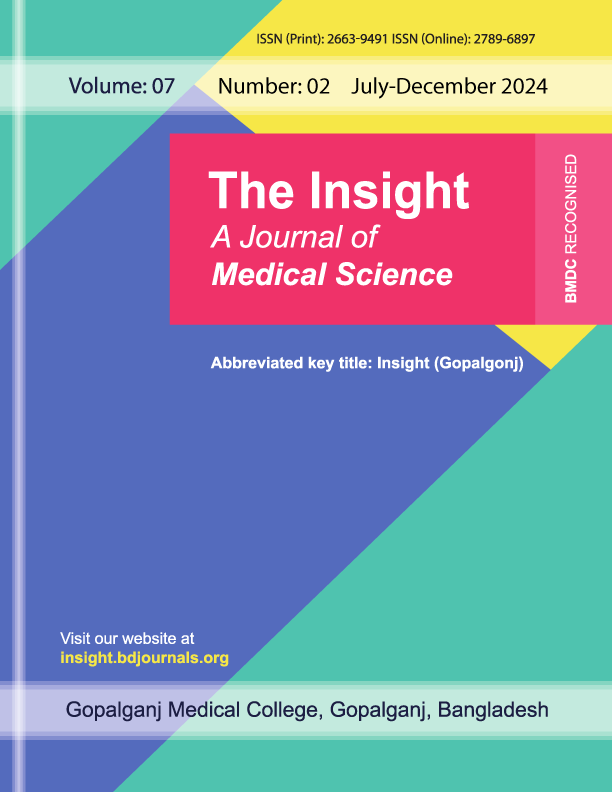Publiée 2025-04-27
Mots-clés
- Waist-to-Height Ratio,
- BMI,
- Type-2 Diabetes Mellitus
(c) Copyright The Insight 2025

Ce travail est disponible sous la licence Creative Commons Attribution 4.0 International .
Comment citer
Résumé
Background: Despite evidence supporting WHtR as a superior metabolic risk predictor, its clinical utility across populations remains unclear. This study compares WHtR and BMI in predicting T2DM to determine the superior measure. Objective: The aim of the study was to compare the predictive accuracy of waist-to-height ratio (WHtR) and body mass index (BMI) for identifying type 2 diabetes mellitus (T2DM) and determine which anthropometric measure offers superior clinical utility. Methods & Materials: This hospital-based cross-sectional observational study was conducted at the Department of Medicine and Endocrinology of Dhaka Medical College Hospital (DMCH) and Bangladesh Institute of Research and Rehabilitation for Diabetes, Endocrine and Metabolic Disorders (BIRDEM) (July-December 2012) enrolled 100 adults (>25 years) with type 2 diabetes. Using standardized protocols, we collected anthropometric measurements (weight, height, waist/hip circumferences) to calculate BMI and WHtR. Diabetes was confirmed by standard glycemic criteria (FPG ≥7.0 mmol/L, HbA1c >6.5%, etc.). Data were analyzed using SPSS 22.0 (Pearson correlations, p<0.05). Ethical approval and informed consent were obtained. Results: WHtR surpassed BMI for T2DM prediction (r=0.94 vs 0.88), with all values exceeding the 0.5 risk threshold. Strongest in males (r=0.94) and older adults (0.61 at 65+), WHtR offers simpler risk stratification than BMI in our 100-patient cohort (58M/42F, peak prevalence 30% at 45-54y). Conclusion: Waist-to-height ratio (WHtR) is a superior predictor of type 2 diabetes risk compared to BMI, advocating its use in routine clinical practice for more effective screening.



